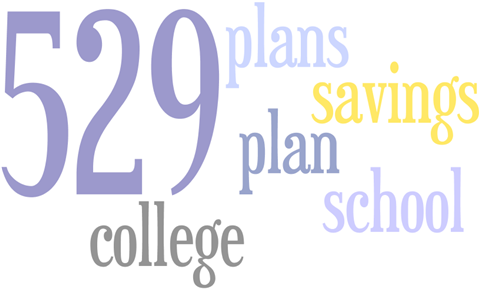Technology
Thoughts on 529 Plans and ABLE Accounts
A trick to move money from a higher tax bracket to a lower tax bracket is to pay your children a salary. In 2018, you can pay someone $9,500 and they are not required to file a tax return. My advice is always to put the kid’s salary into a 529 ...
Jul. 16, 2018

A trick to move money from a higher tax bracket to a lower tax bracket is to pay your children a salary. In 2018, you can pay someone $9,500 and they are not required to file a tax return. My advice is always to put the kid’s salary into an IRC §529 plan for post secondary school, or college. However, I have a high net worth client who wants to use his 529 for private school that costs $50,000 a year. Since the client is in the 37% tax bracket, and one of the goals outside of school is to shift income from the parents’ higher rate to the kids. So why not pay the kids $84,500, which all goes into a 529 plan. The kid’s tax bracket is only 22%. You’ve saved 15% in taxes, and have money in a 529 plan. If your child decides not to go to college or private school, the value of the 529 can be rolled over to another sibling, parent, or even a first cousin.
You are probably asking yourself, if I have a young child, how will the IRS let me pay them so much money? There is no doubt that Social Security will question the payments to your children. At the end of the day are you doing anything wrong? The kids are earning their money, you pay them more because they are your kids. Besides SSA is getting their FICA Taxes. You can even teach your children the value of saving by opening a Roth IRA.
Before we go any further, I am not saying give your kids access to $84,000. Their net check needs to go into a savings account, and then automatically debited to the 529. With a 529 plan, the owner of the account is the parents. The kids are the beneficiaries and can’t get to the money without parental permission. If the money is used for private school or college the earnings the 529 made are tax free.
I have a 20 year old and a 17 year old. There is no possible way I want them to have access to a bunch of money. Before 529 plans and the like there were something called Uniform Transfers to Minors Act (UTMA) accounts, where the parents would put money into that account, and the child at age 18 would access to what was ever in the account. Most of these funds were invested when the kids were younger, setting up a kiddie tax situation. 529 plans are owned by the parents of the children.
The money that is put into a 529 is not a deduction to the ordinary parent that isn’t self-employed. For those people, you can put up to the gift tax limit ($15,000 to any one person, unless you are married and elect to split your gifts you can give $30,000 to any one person. The best part is the earnings grow tax free, and if used for private or college, the earnings are tax free.
Another thing that upsets me is I had a former client who made decent money, but one of his children had special needs. There was no special needs trust set up for him, which I understood because any of the assets in the trust would be held against the child when he went to get disability. However, disability isn’t meant to live on. Then ABLE Accounts came out.
Although the federal tax code allows for ABLE accounts, it’s up to the states to actually set up and administer the programs—just as the states administer 529 programs. When you contribute money to 529 plans, the state invests the money on your behalf. Unlike with a typical IRA or 401K, you can’t dictate how the money is invested outside of making choices as to how aggressive or conservative the money is to be invested, within limits.
As of 2017:
- An individual can contribute up to $14,000 a year to any ABLE account
- A disabled individual can be named as the beneficiary of only one ABLE account
- The person must have been blind or disabled before age 26 to qualify
Contributions to an ABLE account are not tax-deductible, but all investment earnings remain untaxed as long as money taken from the account is used for “qualified disability expenses.” Such expenses include, among other things:
- Medical treatment
- Education, tutoring and job training
- Special-needs transportation
- Assistive technology
- Housing
- Legal and administrative fees
- As with education 529 plans, taxes apply if money is withdrawn from an ABLE account for something other than qualifying expenses. Usually, the beneficiary will have to:
Pay income taxes on the portion of the withdrawal that consists of investment earnings, as opposed to contributions. In addition, a 10% tax penalty will apply.
A key feature of ABLE accounts is that the first $100,000 in an account is not treated as personal assets of the account’s beneficiary. This is important because federal law generally bars individuals from receiving assistance such as Medicaid, housing aid and Supplemental Security Income if they have more than $2,000 worth of financial assets.
Severely disabled individuals often need these government services, especially after their parents die or can no longer care for them. Advocates for the disabled have long argued that the $2,000 cutoff effectively punished those whose families planned ahead.
